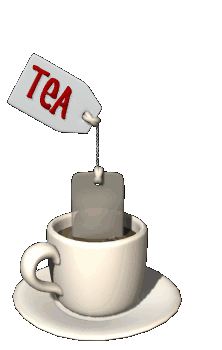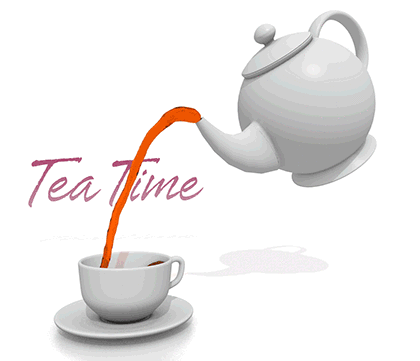
Tea is often thought of as being a quintessentially British drink, and we have been drinking it for over 350 years. But in fact the history of tea goes much further back.
The story of tea begins in China. According to legend, in 2737 BC, the Chinese emperor Shen Nung was sitting beneath a tree while his servant boiled drinking water, when some leaves from the tree blew into the water. Shen Nung, a renowned herbalist, decided to try the infusion that his servant had accidentally created. The tree was a Camellia sinensis, and the resulting drink was what we now call tea.
 hist7Опишите фото... |
|---|
 hist1Опишите фото... |
 hist8Опишите фото... |
 hist6Опишите фото... |
 20171029_163542Опишите фото... |
 20171028_123849Опишите фото... |
 hist9Опишите фото... |
 hist3Опишите фото... |
 hist2Опишите фото... |
 hist10Опишите фото... |

During the 17th century the population of England and Wales grew steadily. It was about 4 million in 1600 and it grew to about 5 1/2 million by 1700.During the 17th century the population of England and Wales grew steadily. It was about 4 million in 1600 and it grew to about 5 1/2 million by 1700.
During the 17th century England became steadily richer. Trade and commerce grew and grew. By the late 17th century trade was an increasingly important part of the English economy. Meanwhile industries such as glass, brick making, iron and coal mining expanded rapidly.
During the 1600s the status of merchants improved. People saw that trade was an increasingly important part of the country's wealth so merchants became more respected. However political power and influence was held by rich landowners.
At the top of 17th century society were the nobility. Below them were the gentry. Gentlemen were not quite rich but they were certainly well off. Below them were yeomen, farmers who owned their own land. Yeomen were comfortably off but they often worked alongside their men. Gentlemen did not do manual work! Below them came the mass of the population, craftsmen, tenant farmers and laborers.
For the upper class and the middle class life grew more comfortable but for the poor life changed little At the end of the 17th century a writer estimated that half the population could afford to eat meat every day. In other words about 50% of the people were wealthy of at least reasonably well off. Below them about 30% of the population could afford to eat meat between 2 and 6 times a week. They were 'poor'. The bottom 20% could only eat meat once a week. They were very poor. At least part of the time they had to rely on poor relief.
In the contemporary era tea is so much associated with the British way of life that it can come as a surprise to learn that it owes much of its popularity here to a foreign princess. While it is not true to say that Catherine of Braganza, the queen-consort of Charles II of England, actually introduced tea to Britain, she certainly had much to do with it becoming a fashionable and widely drunk beverage.
It was the marriage of Charles II to Catherine of Braganza that would prove to be a turning point in the history of tea in Britain. She was a Portuguese princess, and a tea addict, and it was her love of the drink that established tea as a fashionable beverage first at court, and then among the wealthy classes as a whole. Capitalising on this, the East India Company began to import tea into Britain, its first order being placed in 1664.
The British took to tea with an enthusiasm that continues to the present day. It became a popular drink in coffee houses, which were as much locations for the transaction of business as they were for relaxation or pleasure. They were though the preserve of middle- and upper-class men; women drank tea in their own homes, and as yet tea was still too expensive to be widespread among the working classes. In part, its high price was due to a punitive system of taxation. The first tax on tea in the leaf, introduced in 1689, was so high at 25p in the pound that it almost stopped sales. It was reduced to 5p in the pound in 1692, and from then until as recently as 1964, when tea duties were finally abolished, politicians were forever tinkering with the exact rate and method of the taxation of tea.
One unforeseen consequence of the taxation of tea was the growth of methods to avoid taxation - smuggling and adulteration. By the eighteenth century many Britons wanted to drink tea but could not afford the high prices, and their enthusiasm for the drink was matched by the enthusiasm of criminal gangs to smuggle it in. Their methods could be brutal, but they were supported by the millions of British tea drinkers who would not have otherwise been able to afford their favourite beverage. What began as a small time illegal trade, selling a few pounds of tea to personal contacts, developed by the late eighteenth century into an astonishing organised crime network, perhaps importing as much as 7 million lbs annually, compared to a legal import of 5 million lbs!
Leaves from other plants, or leaves which had already been brewed and then dried, were added to tea leaves. Sometimes the resulting colour was not convincing enough, so anything from sheep's dung to poisonous copper carbonate was added to make it look more like tea.
By 1784, the government realised that enough was enough, and that heavy taxation was creating more problems than it was worth. The new Prime Minister, William Pitt the Younger, slashed the tax from 119 per cent to 12.5 per cent. Suddenly legal tea was affordable, and smuggling stopped virtually overnight.
In the early 17th century people began eating with forks for the first time. During the century new foods were introduced into England (for the rich) such as bananas and pineapples. New drinks were introduced, chocolate, tea and coffee. In the late 17th century there were many coffee houses in the towns. Merchants and professional men met there to read newspapers and talk shop.
However for the poor food remained plain and monotonous. They subsisted on food like bread, cheese and onions. Ordinary people also ate pottage each day. It was made by boiling grain in water to make a kind of porridge. You added vegetables and (if you could afford it) pieces of meat or fish.
Individual merchants and sea captains with their own ships raced to bring home the tea and make the most money, using fast new clippers which had sleek lines, tall masts and huge sails. In particular there was competition between British and American merchants, leading to the famous clipper races of the 1860s. The race began in China where the clippers would leave the Canton River, race down the China Sea, across the Indian Ocean, around the Cape of Good Hope, up the Atlantic, past the Azores and into the English Channel. The clippers would then be towed up the River Thames by tugs and the race would be won by the first ship to hurl ashore its cargo at the docks. But these races soon came to an end with the opening of the Suez canal, which made the trade routes to China viable for steamships for the first time.
Ships carrying tea from the Far East to Britain could take over a year to bring home their precious cargo. The most famous tea clipper ship was the Cutty Sark, built in 1868 in Dumbarton. It only made the tea run eight times, but in its era it was a remarkable ship. The Cutty Sark is now on exhibition at Greenwich. The ship was named after Cutty-sark, the nickname of the witch Nannie Dee in Robert Burns's 1791 poem Tam o' Shanter. In those days, the crews of the ships were superstitious. They asked to change the name, justifying it by saying that it could cause the destruction of the clipper and death of the whole team, but the shipowner refused.
 hist1 |
|---|
 20171028_125544Опишите фото... |
 hist6Опишите фото... |
 hist5Опишите фото... |
 hist3 |
 20171028_125634_editedОпишите фото... |
 hist2Опишите фото... |
 hist1Опишите фото... |
 hist6Опишите фото... |
 20171028_123849Опишите фото... |



